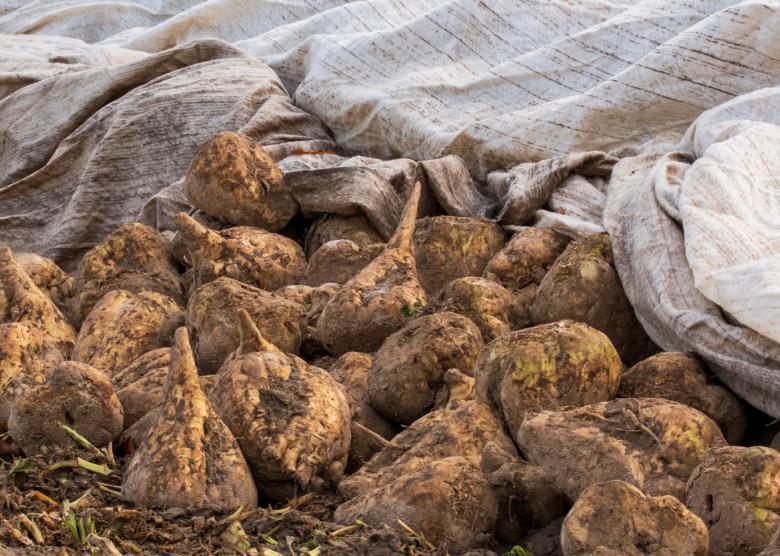Beet Sugar vs Cane: Which One Is More Common in Everyday Food Products?
The Wonderful Argument: Beetroot Sugar Vs Walking Cane and Their Effect On Health
The recurring discussion surrounding beetroot sugar and walking cane sugar raises essential questions concerning their corresponding health and wellness effects and more comprehensive ramifications for customer selections. While both sugar share a comparable chemical composition, their beginnings and processing approaches may affect not just nutrition yet also ecological sustainability. As health-conscious individuals consider the benefits of each alternative, the implications of chemical direct exposure and farming methods enter focus. This discussion invites us to think about not just the sweetness we choose, however the significant impacts of those choices on our wellness and the earth. What might this suggest for future intake patterns?
Review of Sugar Sources
Sugar, a widely taken in sweetener, largely originates from 2 primary sources: sugar beetroots and sugar walking stick. Sugar cane prospers in subtropical and exotic environments, with major manufacturers consisting of Brazil, India, and China.
Alternatively, sugar beets are predominantly expanded in pleasant regions, with considerable manufacturing in nations such as the USA, France, and Germany. The beetroots are harvested from the ground, sliced, and subjected to a procedure that transforms the drawn out juice right into granulated sugar. While both sugar sources ultimately yield sucrose, their farming methods, processing approaches, and geographical distributions differ significantly.
These differences can influence not just the ecological influence of sugar production yet additionally the economic elements of sugar rates and trade. Understanding the beginnings of these sugar is important for customers and policymakers alike, as it lays the foundation for notified discussions about their wellness implications and sustainability.
Nutritional Comparison
When checking out the dietary accounts of beetroot sugar and cane sugar, both resources share a comparable structure as they mostly consist of sucrose. Sucrose is a disaccharide, composed of sugar and fructose, and is accountable for the sweet taste related to both sugars. The refining processes for both beetroot and walking cane sugar return products that are primarily pure sucrose, with very little traces of vitamins, minerals, or various other nutrients.
In terms of calorie web content, both beet and walking cane sugars provide around 4 calories per gram. Neither sort of sugar offers significant dietary advantages beyond power stipulation, as they do not have necessary vitamins or minerals. The presence of trace aspects, such as calcium, magnesium, and potassium, can differ somewhat between the 2, mostly due to the agricultural techniques and soil problems in which they are expanded.
Furthermore, the glycemic index values of beetroot sugar and cane sugar are similar, suggesting comparable impacts on blood sugar levels. Overall, from a nutritional perspective, beetroot and cane sugars are functionally equal, adding mainly to caloric consumption without supplying substantial health advantages over one an additional.
Health And Wellness Effects
The wellness effects of consuming beetroot sugar and walking cane sugar warrant careful consideration, especially offered the climbing prevalence of sugar-related health and wellness problems. Both sorts of sugar add comparable caloric values and can lead to boosted dangers of excessive weight, kind 2 diabetes mellitus, and heart diseases when consumed over. The body metabolizes both sugars into glucose, which can cause spikes in blood sugar level levels, causing insulin resistance over time.
While there is ongoing debate pertaining to the glycemic index of these sugars, research studies recommend that both can adversely impact metabolic health and wellness if eaten in big quantities. beet sugar vs cane. In addition, the possible existence of contaminants in beetroot sugar, such as chemicals from traditional farming practices, elevates additional wellness problems. Conversely, walking cane sugar, particularly when minimally refined, may offer a somewhat much more positive profile because of its all-natural state
Additionally, the usage of included sugars, regardless of the source, is linked to negative health and wellness results, including oral concerns and fatty liver disease. Consequently, moderation is essential, and people ought to bear in mind their complete sugar intake from all resources, eventually focusing on whole foods over included sugars for optimal health results.
Ecological Impact
Understanding the health effects of beet and walking stick sugar likewise results in an exam of their ecological effect, which can significantly affect agricultural sustainability and ecological balance. Both sugar resources have distinct ecological footprints, shaped by their farming practices and geographical requirements.

On the other hand, beetroot sugar is usually expanded in warm climates and usually entails diverse crop turnings. This practice can enhance dirt health and wellness and minimize reliance on chemical inputs. However, intensive beet farming can also lead to nutrient deficiency and pest stress otherwise taken care of sustainably.
Both sugar kinds existing difficulties and possibilities for ecological stewardship. Promoting lasting farming methods and responsible sourcing can minimize their influences, guaranteeing that sugar manufacturing straightens with eco-friendly preservation and lasting food safety and security.
Customer Preferences
Amid expanding understanding of health and wellness and ecological issues, customer choices for sugar types are increasingly affected by assumptions of health and wellness benefits, sustainability, and ethical sourcing. Beet sugar and cane sugar each present unique qualities that interest various consumer demographics.
Health-conscious consumers frequently inspect the nutritional accounts of these sugars, seeking alternatives viewed as less processed or more all-natural. Cane sugar, frequently considered Recommended Reading the conventional sweetener, is often preferred for its perceived pureness and simpleness. In comparison, beetroot sugar, which is frequently stemmed from genetically customized plants, faces skepticism among those concerned about GMOs.
Sustainability is one more considerable factor influencing customer choices. As recognition of farming techniques grows, several customers choose for products that straighten with eco-friendly farming approaches. Cane sugar production, specifically when sourced from sustainable farms, can appeal to eco-conscious customers.
Ethical sourcing plays a vital function also, with consumers increasingly favoring items that sustain fair labor practices. Certifications such as Fair Trade can enhance the attractiveness of cane sugar in the market. Inevitably, customer preferences are formed by a complicated interaction of health, environmental, and honest factors to consider, driving need for both beetroot and cane sugars in varied markets.
Final Thought
Finally, the debate between beet sugar and walking cane sugar incorporates various factors, consisting of nutritional profiles, health effects, and environmental repercussions. beet sugar vs cane. While both sugars primarily consist of sucrose and exhibit similar caloric content, problems regarding chemical usage in beetroot sugar and the environmental effect of walking cane sugar monoculture warrant careful factor to see this site consider. As consumers progressively focus on sustainability and wellness, notified choices relating to sugar consumption end up being essential in advertising general wellness and environmental stewardship
